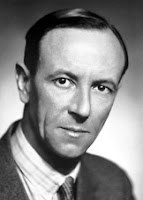CHONPS
domingo, 5 de septiembre de 2010
Evolution of Atomic Model
Democritus
c460-371 BC
Greek philosopher proposed that all matter was composed of indivisible particles called atoms (Greek for uncuttable).To Democritus, atoms were completely solid, homogeneous, indestructible objects.
John Dalton's Model 1803
He viewed the atom as a small solid sphere.
- Each element was composed of the same kind of atoms.
- Each element was composed of different kinds of atoms.
- Compounds are composed of atoms in specific ratios.
- Chemical reactions are rearrangements of atoms (mass is conserved).
Thomson is also remembered for his "plum-pudding" model of the atom, which suggested a solid atom with positively and negatively charged particles evenly distributed throughout the mass of the atom. Discovery for which he was awarded the Nobel Prize in physics in 1906.
Ernest Rutherford’s Model 1909
Discovered that the atom is mostly empty space with a dense positively charged nucleus surrounded by negative electrons. Rutherford received the Nobel Prize in chemistry in 1908 for his contributions into the structure of the atom.
Niels Bohr’s Model 1913
In 1913, Niels Bohr proposed improvement to Rutherford atomic model. For this reason, the planetary model of the atom is sometimes called the Rutherford-Bohr model. Bohr added the idea of fixed orbits, or energy levels for the electron traveling around the nucleus. This model allowed for the idea that electrons can become "excited" and move to higher energy levels for brief periods of time.
James Chadwick
1891-1974
 Lord Rutherford predicted the existence of the neutron is 1920. Walter Bothe obtained evidence of the neutron in 1930. However it was James Chadwick, who repeated Bothe's work, who is known as the discoverer of the neutron. He found these uncharged particles with essentially the same mass as the proton.
Lord Rutherford predicted the existence of the neutron is 1920. Walter Bothe obtained evidence of the neutron in 1930. However it was James Chadwick, who repeated Bothe's work, who is known as the discoverer of the neutron. He found these uncharged particles with essentially the same mass as the proton.Schrödinger or Quantum Model
An atom consists of a dense nucleus composed of protons and neutrons surrounded by electrons that exist in different clouds at the various energy levels. Erwin Schrodinger and Werner Heisenburg developed probability functions to determine the regions or clouds in which electrons would most likely be found.
Bibliography
"Lesson 3-2 The Development of the Atomic Model." Web. 05 Sept. 2010. <http://www.fordhamprep.org/gcurran/sho/sho/lessons/lesson32.htm>.
"Atom Model History." CSMATE Home Page. Web. 05 Sept. 2010. <http://www.csmate.colostate.edu/cltw/cohortpages/viney_off/atomhistory.tml.
domingo, 15 de agosto de 2010
Chemistry in daily life- Carrageenan
The toothpaste is a product that all the persons use daily when washed the tooth. The product contain many ingredients, one of this ingredients is carragenan (gelatin-type substance derived from a red seaweed often called Irish Moss)
This ingredient can be use in foods, milk products, ice cream, beer, shampoo, etc.. In the toothpaste, carrageenan, is used to stabilizer to prevent constituents separating. In others products the use are similar: thickener, increase viscosity, increase water retention.
Carrageenan has been found to cause health problems for many people, including vomiting, ulcerative colitis.
Reference
"What Is Carrageenan?" Bukisa - Share Your Knowledge. 9 Sept. 2009. Web. 17 Aug. 2010. <http://www.bukisa.com/articles/54673_what-is-carrageenan>.Shemberg Corporation -- The Innovative Carrageenan Specialists. Web. 17 Aug. 2010. <http://www.shemberg.com.ph/carrageenan.html>.
Welcome
Hi, welcome to CHONPS, this blog is about the chemestry in life. The name of CHONPS is because this letters are an acronime of the four most common
elements in living organisms: carbon, hydrogen, oxygen, and nitrogen; and
is cool. I hope this blog is to your liking.
elements in living organisms: carbon, hydrogen, oxygen, and nitrogen; and
is cool. I hope this blog is to your liking.
Suscribirse a:
Entradas (Atom)

